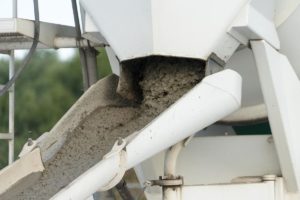Sacramento Ready-Mix Concrete Delivery
Get a Free Ready-Mix Quote
Typical Response Time: 1 Hour

Sweet Treat™
Hanford Sand & Gravel, Inc. has quality concrete at competitive prices. Our concrete mixes typically surpass required strengths in 28 days. We have mixes with proven track records, thus giving our customers the confidence and satisfaction they have poured with the best.
Types of Ready-mix Concrete
When we think of buildings, roads, or bridges, one thing often comes to mind: concrete. It’s a sturdy material that gives strength and longevity to countless structures around us. Let’s dive into the fascinating world of ready-mix concrete. We’ll explore its different types and their uses.
Why Choose Ready-mix Concrete?
Before we jump into the types, let’s understand why we use ready-mix concrete in the first place. Firstly, it offers consistency. Since it’s mixed in a controlled environment, you’re guaranteed the same quality every time. Secondly, it reduces waste. Lastly, it’s efficient, as there’s no need to store raw materials on-site.
What is Ready-mix Concrete?
To put it simply, ready-mix concrete is a type of concrete that is made in a factory or batching plant and then transported to the construction site. This means that instead of mixing the concrete at the site, workers can use it immediately, saving time and effort.
Main Types of Ready-mix Concrete
There are several types of ready-mix concrete available, each with its unique properties. Here are the most common terms used when ordering ready-mix concrete.
- Definition: Slump refers to the measure of the consistency or workability of fresh concrete. It determines how much the concrete will “settle” or slump when the slump cone is removed.
- Test: The slump test is a common way to check the consistency of the concrete mix. A cone is filled with the concrete, then lifted, and the amount the concrete slumps from the cone’s height is measured.
- Importance: A proper slump is crucial because it impacts how easy the concrete is to place, compact, and level.
- Variability: Different ready-mix designs require different slump values depending on their intended application. For instance, a drier mix (low slump) might be used for roads, while a wetter mix (high slump) could be used for walls.
- Adjustment: If the slump value isn’t ideal for the project, the mix’s water content can be adjusted, or chemical admixtures can be added to modify the slump without altering the water-cement ratio.
- Definition: In the context of concrete, a “sack” refers to a standard bag of cement, typically weighing 94 pounds in the USA.
- Measurement: When discussing concrete mixes, you might hear terms like “5-sack” or “6-sack.” This refers to the number of bags of cement per cubic yard of concrete.
- Strength Relation: Generally, the more sacks of cement in a mix, the stronger the concrete will be.
- Cost Implication: A higher sack mix, since it contains more cement, is typically more expensive than a lower sack mix.
- Application: For critical structural elements like foundations, a higher sack mix might be preferred. For non-structural or decorative elements, a lower sack mix could be sufficient.
- Pea Gravel: These are small, rounded stones, usually sized between 1/8 to 3/8 inch. Pea gravel is often used in exposed aggregate finishes
- Gravel: Unlike rounded gravel, crushed stone has angular edges and comes from larger rocks broken down. It provides good interlocking and is commonly used in standard concrete mixes.
- River Rock: These are larger rounded stones, typically used in larger mixes or specialty applications. Their smooth finish comes from natural erosion due to water flow.
For Mix Designs We offer:
- 3/4″ Crushed Rock
- 3/8″ Pea Gravel – Three Colors Available
- Class II Aggregate Base
- Pea Gravel
- Round Rock
- 1 x 4 Con Mix
A hypothetical mix would sound something like:
“I need 10 yards of a 5-sack 50/50 mix with a 4 inch slump“
Lets Break Down What This Order Means:
1. 10 Yards
- This refers to the volume of concrete required. A “yard” here stands for a cubic yard, which is a standard unit of measure for ready-mix concrete in the USA.
- A cubic yard is equal to the volume of a cube with each side measuring one yard (3 feet).
- So, “10 yards” means the person needs enough concrete to fill a volume equivalent to 10 of these cubes.
2. 5-Sack
- The term “sack” pertains to a standard bag of cement, which usually weighs 94 pounds in the USA.
- “5-sack” means there are five 94-pound bags of cement used in every cubic yard of the concrete mix.
- The sack count indicates the strength and durability of the concrete. More sacks typically mean a stronger mix.
3. 50/50 Mix
- This refers to the rock composition in the concrete.
- “50/50 mix” typically means that the aggregate (the rock components) is made up of 50% of one type of aggregate and 50% of another type of aggregate.
- The particular ratio of gravel can affect the workability, strength, and texture of the concrete when it’s cured.
4. 4-inch Slump
- The slump indicates the consistency or workability of the concrete.
- A “4-inch slump” means when you do the slump test (by filling a cone with the mix, then removing the cone), the concrete will “settle” or slump down by 4 inches.
- Slump gives an idea about the concrete’s water content. A higher slump indicates a wetter mix, which can be easier to work with, but might compromise strength.
Ranges of Typical Mixes:
Sack Count:
- 4 to 5 Sacks: Commonly used for residential constructions, like driveways, patios, and sidewalks.
- 6 to 7 Sacks: Used for structures that require higher strength like commercial buildings, bridges, and highways.
Aggregate Ratio:
- 50/50: A balanced mix suitable for a wide range of applications.
Slump:
- 2 to 3 inches: Drier mix, used for projects where higher strength is required, like roadways or footings.
- 4 to 5 inches: Standard workability, common for general construction tasks.
- 6 to 7 inches: Wetter mix, often used for flows or when the concrete needs to be pumped to the site.
With this breakdown, the hypothetical mix design is essentially ordering a moderately strong, balanced aggregate mix with standard workability suitable for a wide range of construction applications.
Ready-mix concrete is a versatile material that comes in many forms. Whether you’re building a house, designing a decorative pathway, or repairing a bridge, there’s a type of ready-mix concrete for the job. Not only does it make construction more efficient, but it also ensures consistency and quality in every project.

Concrete, Concrete Blocks, V-Blocks
We also have Concrete interlocking V blocks. Their dimensions are 2 x 2 x 6 ft and they weigh about 3500 pounds. View Concrete Blocks
Interlocking Concrete Blocks: Betonblock
Betonblock interlocking concrete blocks are a “lego-style” stackable building material suitable for both temporary and permanent structures. These interlocking concrete blocks have no vertical stacking limit.
We also have Concrete Blocks. Their dimensions are 2 x 2 x 6 ft and they weigh about 3500 pounds.

Our Locations
Sacramento Ready-mix
Elk Grove
Ready-mix
Elk Grove, CA 95624
Office: 916.685.9774
Fax: 916.685.1911
Roseville
Ready-mix
Roseville, CA 95678
Office: 916.782.9150
Fax: 916.685.1911





